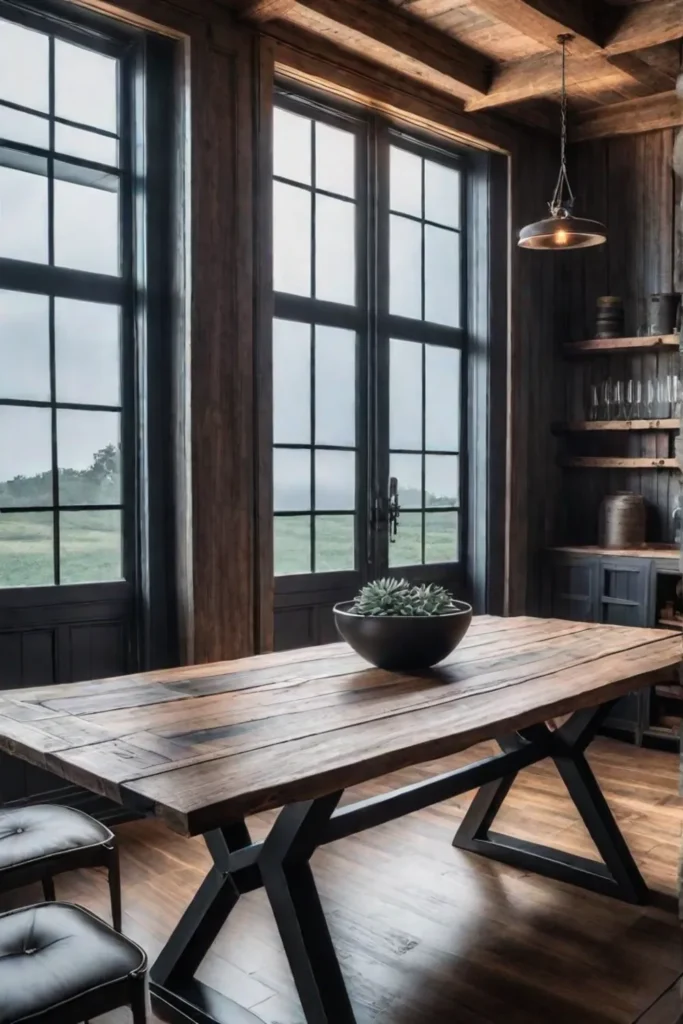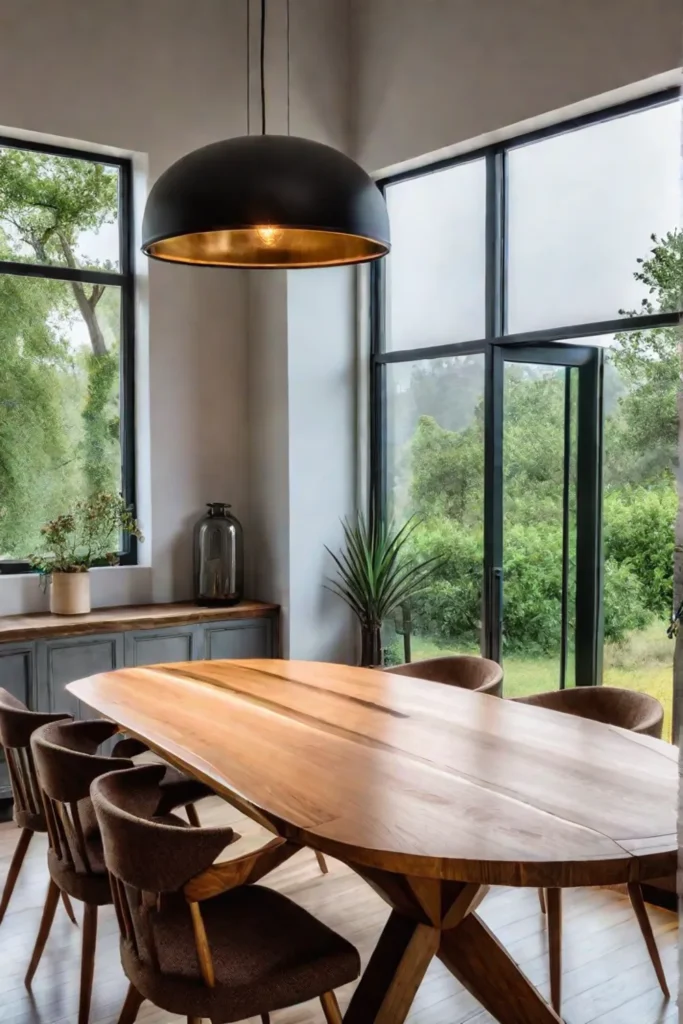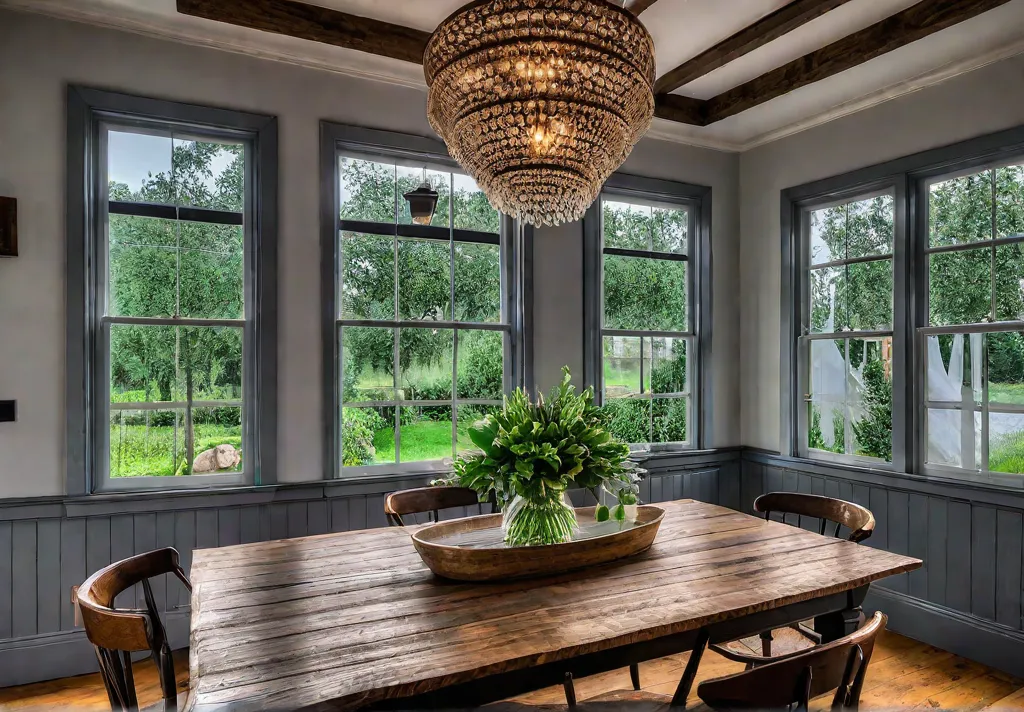Let’s be honest, the “farmhouse” style we see everywhere today is a far cry from the purely functional homes built by settlers centuries ago. Those were structures born of necessity, built with whatever wood was handy to keep the elements at bay. But what has endured is the feeling they evoke: a sense of warmth, durability, and a connection to something real.
Today’s interpretation of farmhouse style is more of a feeling, a mood. It’s less about historical accuracy and more about creating a welcoming heart in your home. And nowhere is that more crucial than the dining table. It’s more than just a place to eat; it’s a centerpiece for connection, for laughter, for life.

So how do you choose a tabletop that feels authentic to you? It really comes down to the story you want to tell. Are you drawn to history and sustainability, the raw beauty of nature, or the comfort of timeless tradition? Let’s walk through the options, curator-style, and find the perfect fit for your home.
The Storyteller: reclaimed wood’s Second Act
I’ll never forget the first time I visited a timber yard specializing in reclaimed wood. The air was thick with the scent of aged pine and oak, and every stack of lumber had a visible past—nail holes, faint saw marks, the deep, rich patina of a century of weather. This is the magic of reclaimed wood. It’s not just material; it’s a collection of stories.
The Allure of a Past Life
Choosing a reclaimed wood table means you’re bringing a piece of history into your home. Each imperfection—every knot, watermark, and subtle discoloration—is a chapter in that wood’s life. That character is impossible to replicate with new materials. It has a depth and soul that can instantly make a new space feel grounded and lived-in. Plus, wood that has survived for decades in a barn or factory has already done all the expanding and contracting it’s going to do, making it incredibly stable and durable.

A Truly Sustainable Heart
Beyond the aesthetic appeal, opting for reclaimed wood is a powerful statement about sustainability. We’re giving a beautiful, finite resource a second life, keeping it out of the landfill, and reducing the demand for new timber. In an industry that can be tough on the environment, this is a choice that feels genuinely good. Look for certifications from organizations like the Forest Stewardship Council (FSC) to ensure the wood is sourced responsibly.
What to Know Before You Commit
Now, here’s the thing. Reclaimed wood requires a bit of know-how. You need to ensure it’s been properly treated—kiln-dried to remove any pests and sealed to protect it from the rigors of daily life (spills happen!). Don’t be afraid to ask a seller about the wood’s provenance and the finishing process. A good finish, like a high-quality oil or a durable polyurethane, will protect the surface while letting that incredible character shine through.

The Maverick: The Raw Beauty of Live-Edge Wood
If reclaimed wood tells a story of human history, live-edge wood tells a story of nature itself. It’s the rebel of the dining table world, refusing to conform to straight lines and perfect angles. A live-edge table follows the natural contours of the tree it came from, preserving its original, untamed silhouette.
Nature as the Ultimate Artist
What really gets me about a live-edge piece is that each one is a completely unique sculpture. The curves, knots, and grain are like a fingerprint—no two are ever alike. It creates an immediate focal point in a room, a piece of functional art that celebrates the organic, imperfect beauty of the natural world. From the deep, moody hues of walnut to the lighter tones of maple or oak, the species you choose dramatically impacts the room’s feel.

Finding the Right Piece
Selecting a live-edge slab is a personal journey. You’re not just picking a tabletop; you’re choosing a piece of nature to live with. Pay attention to the thickness—a substantial slab of at least two inches will feel more grounded and be more stable. It’s also crucial to ask about the drying process. Wood that hasn’t been properly air- and kiln-dried can warp or crack over time. This is where it gets tricky, but a reputable maker will always be transparent about their process.
A Bridge Between Styles
One of the most surprising things about live-edge tables is their versatility. They can feel just as at home in a sleek, modern setting as they do in a rustic farmhouse. Paired with minimalist metal legs, the look is sculptural and contemporary. Set on a chunky wooden base, it leans into a more rustic aesthetic. This ability to bridge different design worlds is what makes a live-edge table a truly timeless investment.

The Classicist: The Timeless Grace of Traditional Woods
While the drama of reclaimed and live-edge woods is undeniable, there is a quiet confidence in traditional wood species that has graced homes for generations. Think of the warm, honey-toned pine of a country kitchen or the sturdy, elegant oak of a formal dining room. These are the tried-and-true materials that form the backbone of classic farmhouse style.
The Enduring Appeal of Oak, Pine, and Walnut
There’s a reason woods like oak, pine, and maple are classics. They are beautiful, reliable, and imbued with a sense of warmth and invitation. Red and white oak are incredibly durable, making them fantastic choices for a busy family that will use their table daily. Pine offers a more rustic, affordable charm with its distinctive knots, while walnut brings a touch of sophisticated drama with its deep, rich color. These woods are canvases—you can opt for a distressed finish to lean into a rustic vibe or a smooth, clear coat to let the natural grain take center stage.

Modern Farmhouse, Modern Choices
Even within the “traditional” category, there’s so much room for personality. Don’t be afraid to mix and match. A richly-toned walnut top on a painted maple base, for instance, can create a stunning modern farmhouse look. This is a place to show your creativity and move beyond a one-note design. Consider lesser-known but equally beautiful woods like acacia, which offers a robust and striking grain perfect for a rustic feel.

A Place at the Table
Ultimately, choosing your dining tabletop is about so much more than wood. It’s about creating an invitation. An invitation for your family to gather after a long day, for friends to linger over a shared meal, for traditions to be born. Whether it’s a piece of wood with a hundred-year-old story, a slab that echoes the wildness of a forest, or a classic timber that feels like coming home, your table becomes the heart of your house.

So, trust your instincts. Run your hand over the surfaces. Ask questions. Choose the one that speaks to you, the one that feels ready to catch the next hundred years of stories that will unfold around it. Because that’s what turns a house into a home.






